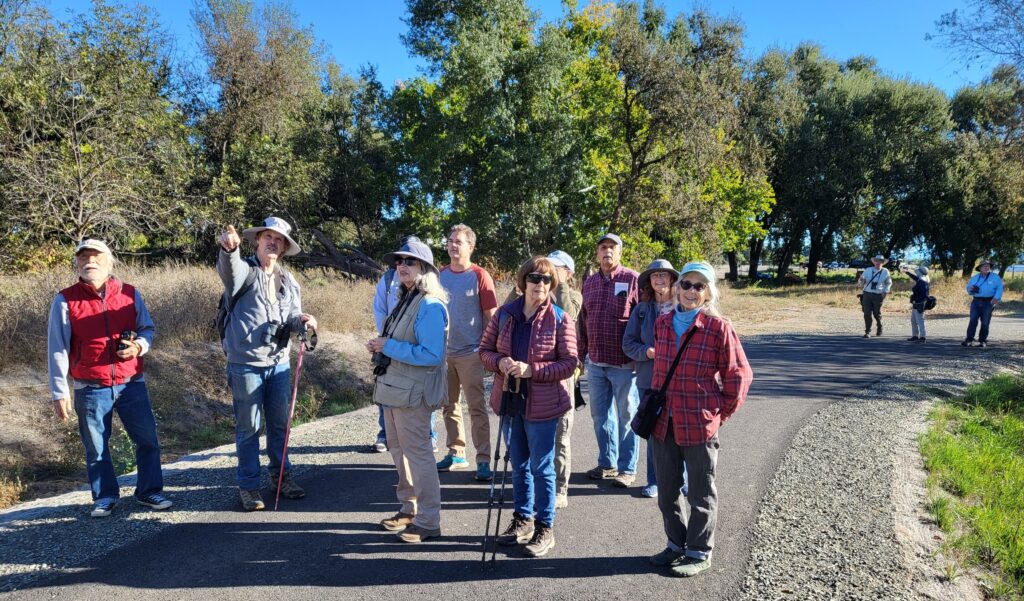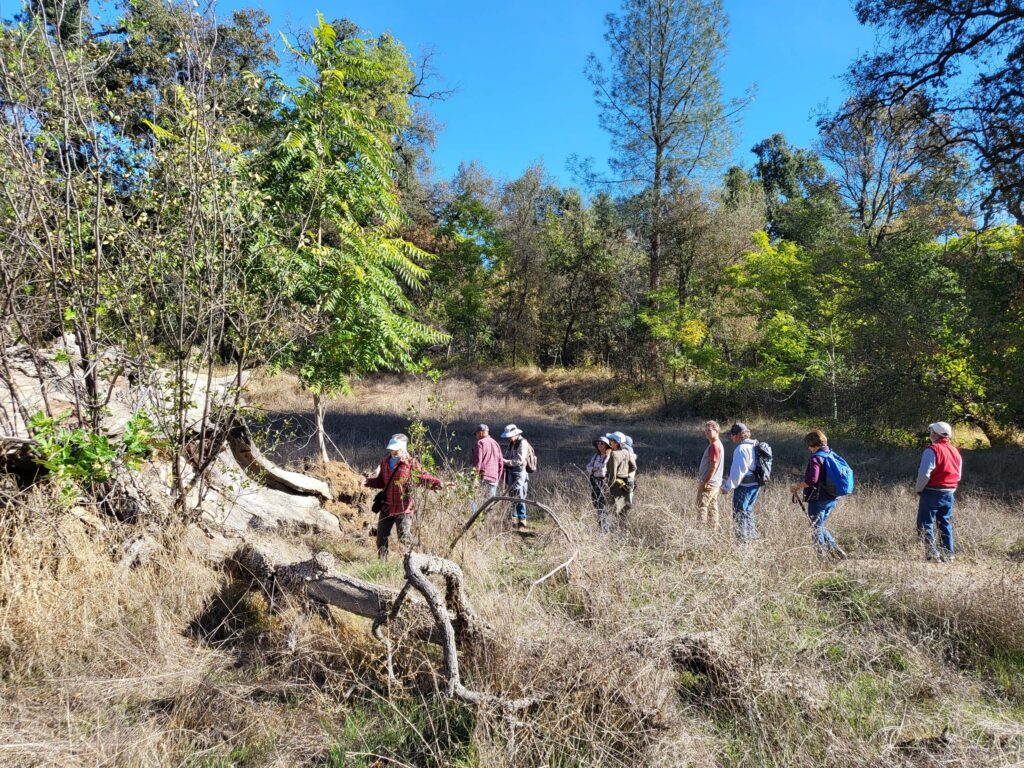By David Ledger
All photos by Doug Mandel
For the Kum Bay field trip, SEA and CNPS teamed up with the Wintu Audubon Society for an unofficial joint field trip. George Horn led the birding part of the field trip while David Ledger focused on native and non-native plants. We had 14 people on this easy three-mile walk on fairly level ground.
This trail begins next to I-5 on a paved City of Redding Trail that curves around to meet the Sacramento River and escapes the sounds of the freeway traffic. The City trail is paved and runs for .7 miles and then meets Bureau of Land Management (BLM) land where the trail is faint but the blackberries and other plants have been pruned back from the soft earthen trail. It was near here where we met the highlight of the field trip, three adult Bald Eagles circling together overhead! Both sides of the river on the BLM section have natural vegetation bringing not only eagles and other raptors, but also a Great Egret, Blue Heron, Kingfisher, Ruby-crowned Kinglet, and many other birds. Near the end of our walk in the ancient riverplain were two circling Red-tailed Hawks who eventually perched on two separate dead snags, another indication of the importance of dead trees and living to an oak woodland. Other dead trees showed evidence of use by birds for nesting, food from dwelling insects and storage of acorns.
Among the many plants, there were a few northern black walnuts (Juglans hindsii), skunk brush (Rhus aromatica), hop tree (Pelea crenulata) black, sandbar and arroyo willow (Salix ssp.) and an uncommon plant identified for us by naturalist Barbara Peck was Wright buckwheat (Eriogonum wrightii) with the common naked buckwheat (E. nudum) prolific on the trail.
Walking on the earthen trail through the old floodplain with many giant valley oaks shading us was a relaxing experience. As close as we were to civilization, it was quiet, with many different native shrubs and trees and assorted birds and squirrels. Preserving important riparian areas is very important not only for many species of birds and other animals on land but also for the various salmon runs, steelhead trout, and other riverine species. This is why SEA, Wintu Audubon, CNPS, Sierra Club, and many other organizations are concerned about preserving all of our riparian areas, especially along the Sacramento River.
If you want to see this beautiful riparian area, I encourage you to go beyond the paved trail and see if you too appreciate this area left in its natural beauty and why we need to preserve more of our beautiful riparian areas.


I was wondering if anyone would be offering another guided walk through the Kum Bay Xerel area?
We don’t have any plans to lead another through Kum Bay Xerel in the works right now but keep an eye out in the newsletter and on our Facebook and Meetup pages – we may do another in the future!
Comments are closed.